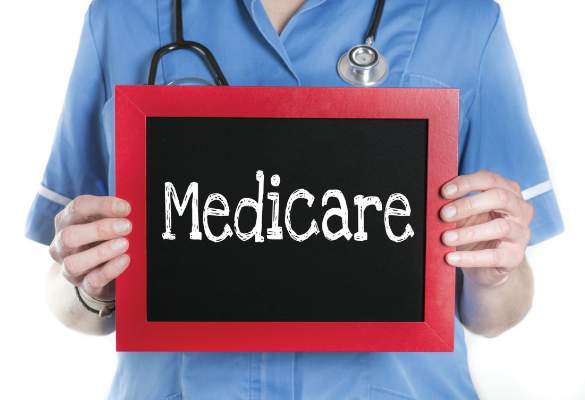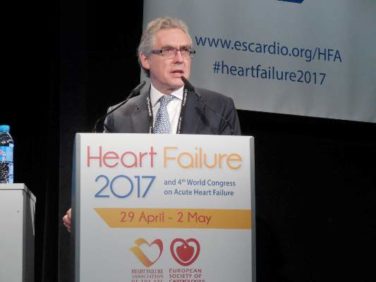Proposed changes to the Quality Payment Program (QPP) – the value-based payment program established by the Medicare Access and CHIP Reauthorization Act (MACRA) – are drawing mixed reactions from physicians.
A key component of the proposed update to the QPP is an expansion of the exemption threshold for the Merit-based Incentive Payment System (MIPS). Currently, physicians are exempt from MIPS if they bill $30,000 or less in Medicare Part B charges or have 100 or fewer Medicare patients. The proposal would increase the number of exempt physicians by raising the threshold to $90,000 or less in Part B charges or 200 or fewer Medicare patients.
Eligible clinicians and group practices that fall below the threshold can still voluntarily submit data, but they will not be scored for their participation in MIPS and will not be eligible for bonuses or face penalties for not meeting goals.
The expanded threshold proposal drew praise from the American Medical Association for exempting many small and rural practices from the requirements, but they also called on the agency to move more quickly in notifying physicians if they fall into the exempt category.
The American College of Surgeons expressed support for the changes to the threshold, adding that going forward the threshold should “be maintained at numbers no lower than that proposed for the 2018 performance period so that providers may have certainty of the criteria and their participation responsibilities from year to year.”
The American College of Cardiology supported the expansion of the low-volume threshold and encouraged the agency to review the levels annually.
But the Association of American Physicians & Surgeons suggested the volume threshold didn’t go far enough. “We ask that CMS consider a further widening of the threshold to all practices with 18 or fewer clinicians,” the group said in its comments on the proposal. “A threshold in terms of billing amounts and the number of patients creates an unhelpful incentive for physicians to turn away Medicare patients in order to qualify for the exemption.”
The group argued that larger practices can better absorb the cost of complying with MACRA regulations and basing participation on billing could create uncertainty due to fluctuations in billing from year-to-year.
Opt in option?
Several other groups sought a pathway for exempt physicians to opt into the program and take advantage of bonuses, especially those who had already prepared for the program based on the lower initial threshold.
“By raising the low-volume threshold and not offering an opt-in ability, CMS is further and needlessly delaying practices from payment based on value over volume, as well as the intent behind the establishment of virtual groups,” the American Academy of Family Physicians wrote in comments to the CMS.
The American Gastroenterological Association voiced its support for expanding the exclusion threshold and supported the idea of an opt-in, but called on the CMS to hold harmless those practices that opted in. “Clinicians and groups opting-in to the QPP should not be subject to negative payment adjustments,” AGA said in its comments to the CMS.
The American Academy of Dermatology Association supports the proposed low-volume threshold and called upon the CMS to allow those who want to participate to create a path to opt into MIPS.
The Endocrine Society supports the expansion of the threshold, but called on the CMS to provide a pathway for those who want to participate if they are otherwise excluded.
The American Osteopathic Association also called for a pathway for exempted physicians to opt in. And they cited two negative effects of expanding the threshold to a wider group of physicians. “First, it will result in wasted resources from practices that prepared for MIPS participation and are now unable to participate,” the association said in comments to the CMS. “Second, it will have the effect of dividing all practices into two levels: those that are incentivized to provide value-based care, and a significant number that are not eligible for such incentives.”
Individuals vs. groups
The American Congress of Obstetricians and Gynecologists (ACOG) supports the proposed threshold for individuals, but suggested changes for groups. “ACOG continues to believe that the threshold should only apply to individual clinicians and that CMS should develop a new, separate definition if the agency believes that groups should also have a low-volume threshold,” ACOG said in comments to the CMS. “Setting the low-volume threshold at both the individual and group level introduces unnecessary complexity into the program because other exclusions for MIPS only apply to individual clinicians.”
The Medical Group Management Association (MGMA), while supporting the general goal of reducing burden on small and solo practices, suggested it needed to be tweaked for the group setting.
“MGMA continues to question CMS’ application of the same threshold at both the clinician and group practice level,” the association said in its comments to the CMS. “This approach significantly disadvantages groups of clinicians who, in the aggregate, rarely care for Medicare patients, but include one or two members that actively participate in the program. MGMA urges CMS to extend its own logic behind setting a group practice equivalent for the non-patient-facing definition by exempting group practices when 75% or more of the national provider identifiers who bill under the group’s tax identification number meet the threshold on an individual basis.”
Expansion goes too far
But the AMGA, which represents group practices, called the new threshold “counterproductive” in its comment letter and suggested that the CMS should be lowering the threshold, not raising it.
AMGA noted that eligible clinicians who do not meet the threshold, but who are providing high-value care as defined by the QPP, are “forced to leave higher reimbursement rates on the table; these could be considerable over time.”
In addition, AMGA said that expanding the exemption decreases the money available for those who are required to participate. The CMS estimates in the proposed rule that in payment year 2019, $1.333 billion would be paid to top performers (including $500 million in exceptional performance bonus payments), but under the newest proposal, that number drops to $673 million (including $500 million in exceptional performance bonus payments). This will translate to a 0.3% bump in payment in 2020.
“The effect of eliminating of two-thirds of eligible clinicians from the MIPS formula is to financially undermine participating clinicians,” AMGA said in comments to the CMS. “They effectively lose by winning.”





